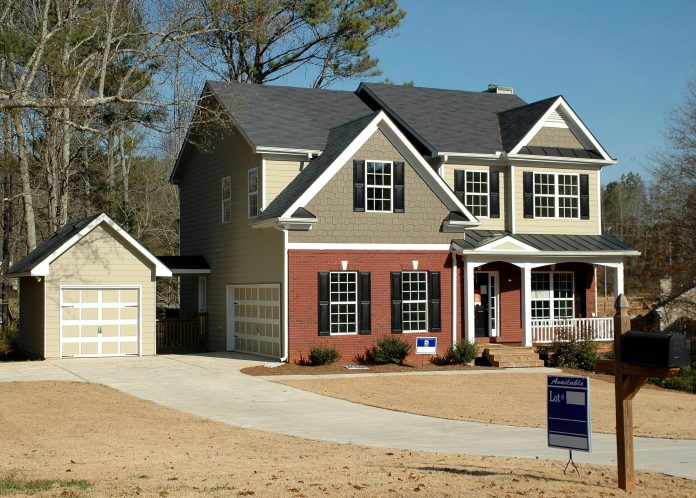In today’s world, where the focus on sustainability is growing, green mortgages are emerging as a tool for funding energy-efficient homes. These specialized loans are tailored to support the buying or upgrading of homes that meet eco standards. Given the increasing energy expenses and heightened awareness of climate change, green mortgages provide both advantages and ecological benefits. Let’s take a look at what green mortgages entail, how they operate, and why they could be an option for your upcoming home purchase or renovation.
What Are Green Mortgages?
Green mortgages are loans that offer incentives for acquiring or renovating homes that comply with energy efficiency or environmental standards. Their goal is to decrease the carbon footprint of properties by promoting energy practices. These mortgages come in types such as:
- Energy Efficient Mortgage (EEM): Provided by agencies like the FHA and VA, EEMs enable homebuyers to borrow additional funds to implement energy-efficient upgrades in their homes.
- Green Home Loan: Certain lenders provide home loans designed specifically for purchasing homes certified as energy-efficient or environmentally friendly by organizations like ENERGY STAR or LEED.
- Green Renovation Loan: These loans cater to homeowners who want to enhance the energy efficiency of their properties.
How Green Mortgages Function
Green mortgages operate by offering advantages to individuals who opt for energy-efficient homes or upgrades. Some key aspects typically include:
- Higher Loan Amounts: Green mortgages may enable borrowers to qualify for loan amounts higher than standard mortgages. This is because the expected savings from energy improvements are factored into the loan assessment process.
- Reduced Interest Rates: Certain green mortgages feature interest rates or reduced fees, helping to offset the expenses related to energy enhancements.
- Rebates and Incentives: Lenders might provide extra rebates or incentives for borrowers making energy-efficient upgrades, further decreasing the overall mortgage costs.
- Extended Repayment Periods: Green mortgages may come with longer repayment periods, making monthly payments more manageable and affordable.
Advantages of Green Mortgages
- Savings on Costs: Energy-efficient properties usually lead to lower utility bills due to decreased energy usage. Over time, these savings can balance out the mortgage or upgrade costs, making green mortgages a prudent decision.
- Environmental Impact: By investing in energy-efficient homes, borrowers play a role in reducing their carbon footprint and supporting sustainable living practices. This could contribute to a healthier environment and the fight against climate change.
- Enhanced Property Value: Energy-efficient homes typically command higher resale prices. Upgrades like energy-efficient windows, insulation, and HVAC systems can make a property more appealing to buyers.
- Wellness and Comfort: Energy-efficient homes often boast improved air quality and consistent temperatures, enhancing the comfort and health of residents.
Steps to Qualify for an Eco-Friendly Mortgage
Securing an eco mortgage involves key actions:
- Assess Eligibility: Inquire with lenders about their green mortgage offerings and specific qualification criteria. Eligibility standards may differ based on the type of mortgage and the lender’s policies.
- Conduct a Home Energy Evaluation: To implement energy improvements, a home energy assessment or audit might be necessary to identify potential savings and necessary enhancements.
- Select Certified Properties or Upgrades: Ensure that the property you intend to buy or upgrade meets required energy efficiency benchmarks. Look for certifications such as ENERGY STAR or LEED.
- Collaborate with a Green Mortgage Specialist: Engage with a lender specializing in eco mortgages. They can assist you throughout the process and provide insights into your options.
Considerations and Challenges
Although green mortgages come with advantages, there are challenges and factors to consider:
- Availability: Green mortgages may not be offered by all lenders. Their availability can differ based on location. It’s important to conduct research to identify lenders specializing in these loan types.
- Initial Costs: Investing in energy upgrades or certifications upfront may be necessary. However, the long-term savings and benefits typically outweigh the expenses.
- Complexity: The process of applying for a mortgage and ensuring compliance with energy efficiency standards can be more intricate compared to traditional mortgages. Seeking guidance from a lender or financial advisor can help navigate these complexities.
Green mortgages mark a progression towards promoting eco-friendly home financing. By supporting energy-efficient homes and enhancements, these loans offer both advantages and ecological benefits. With increasing awareness of climate change and environmental concerns, green mortgages present an avenue for homeowners seeking to make an impact while reaping financial rewards. Whether you’re in the market for a home or planning renovations, exploring green mortgage possibilities could lead you toward a more environmentally conscious future.


